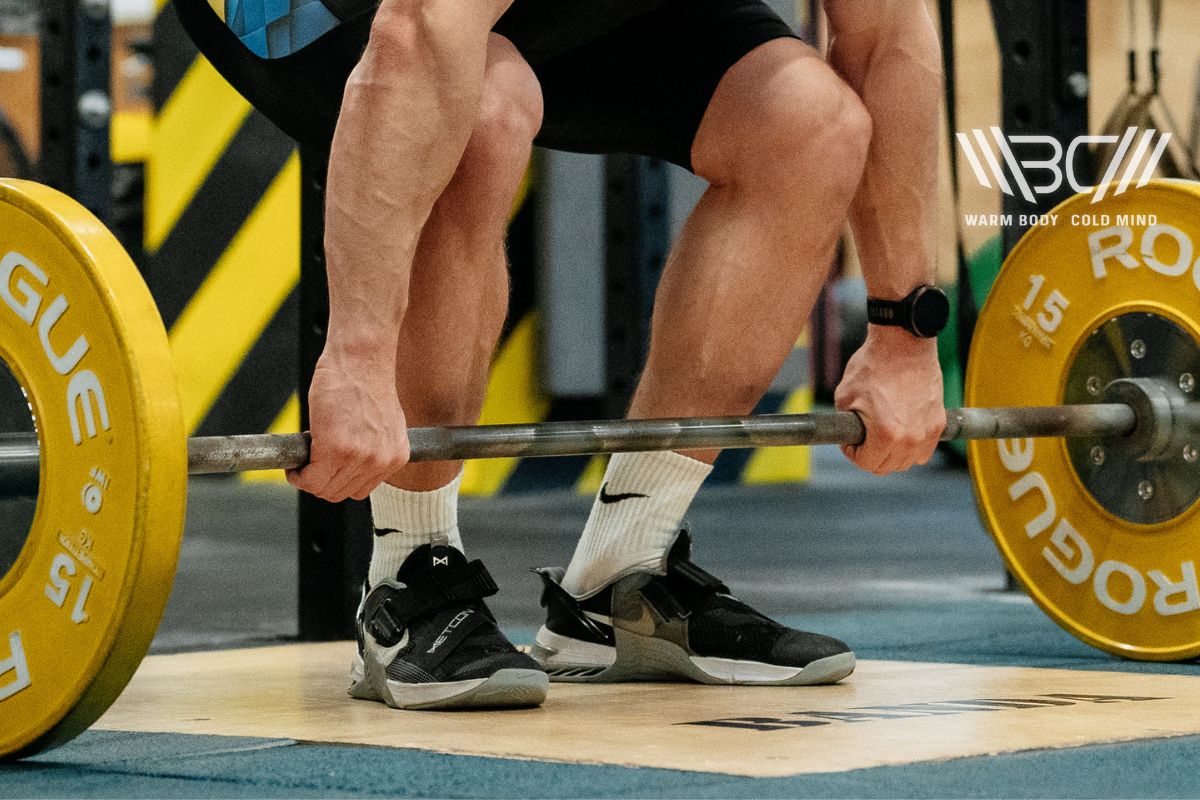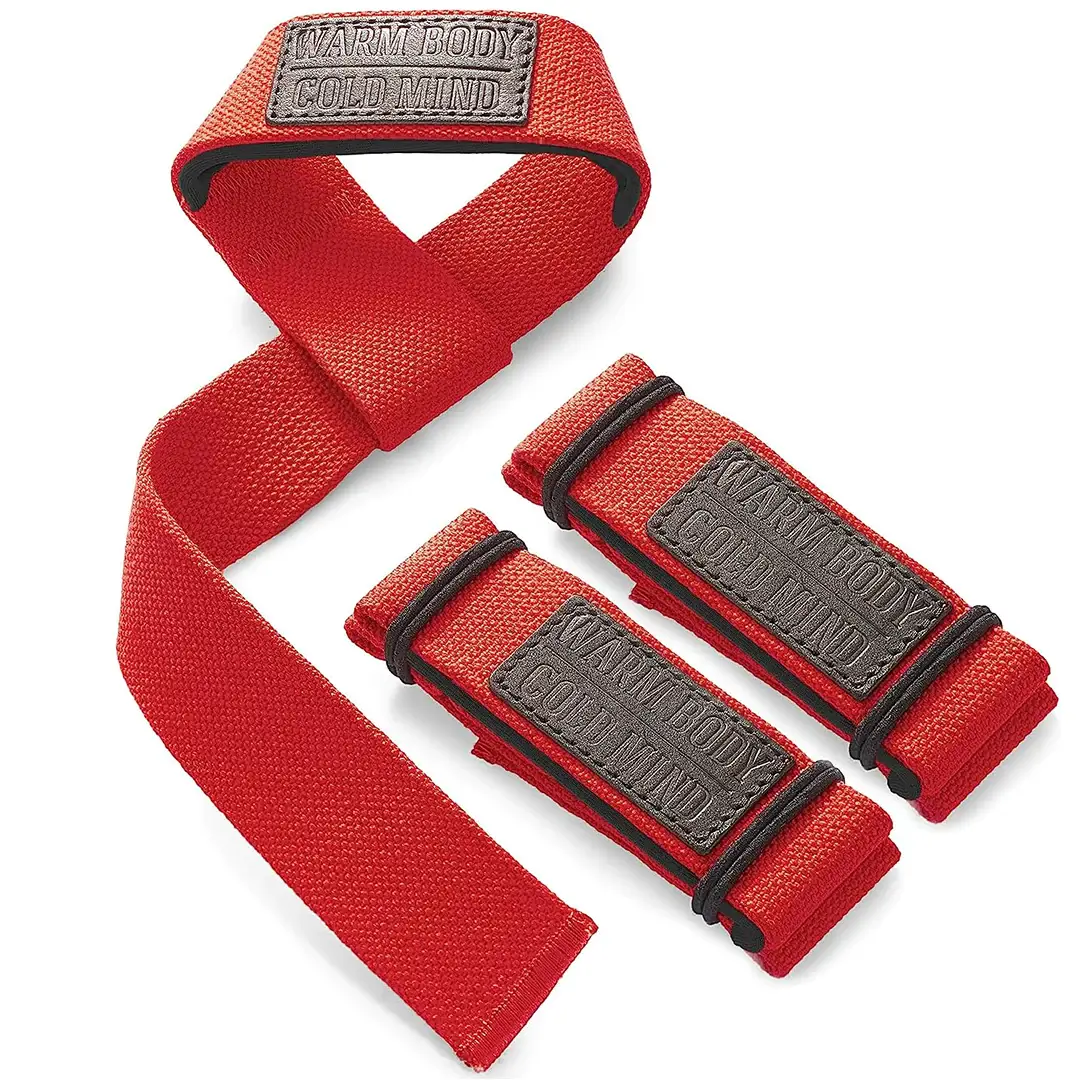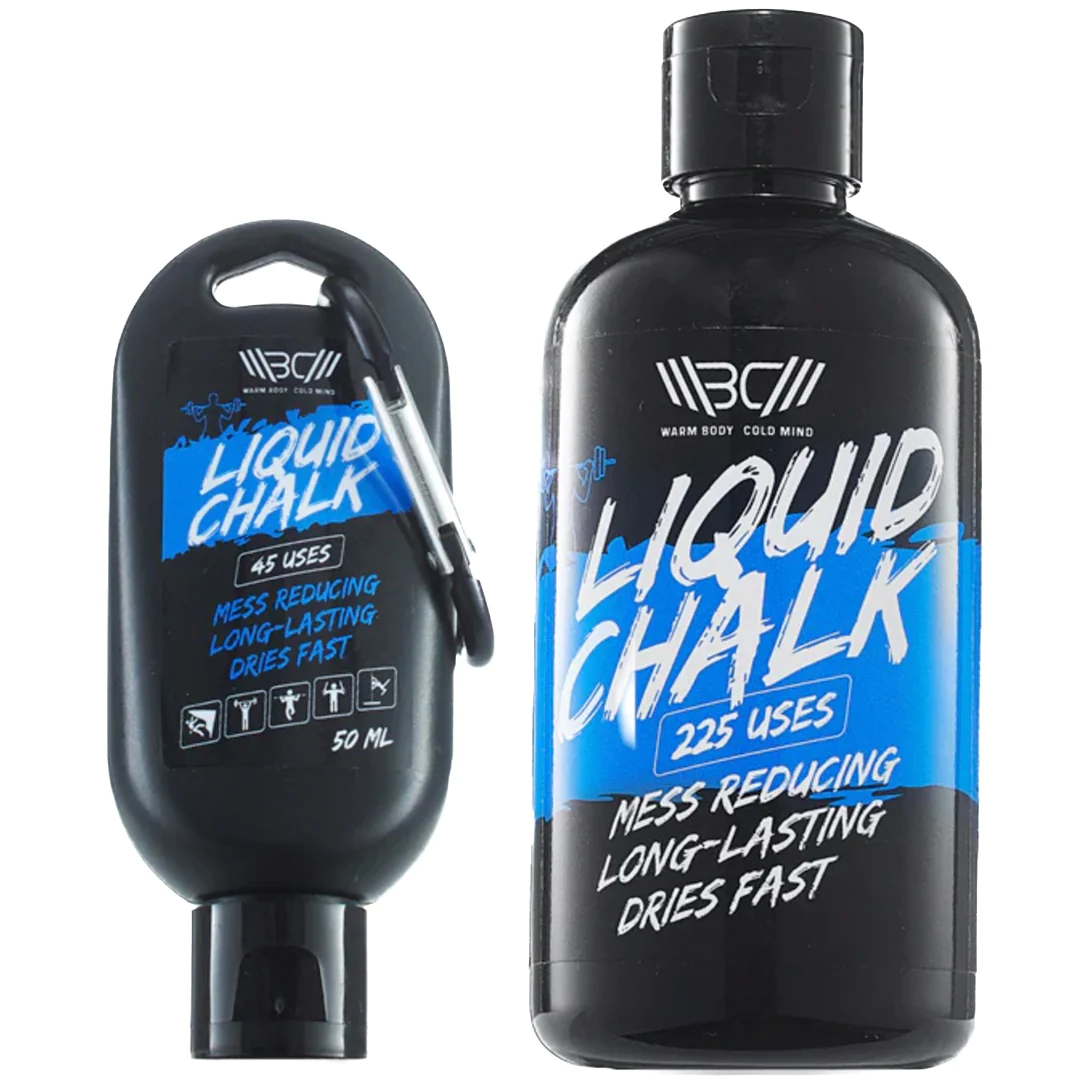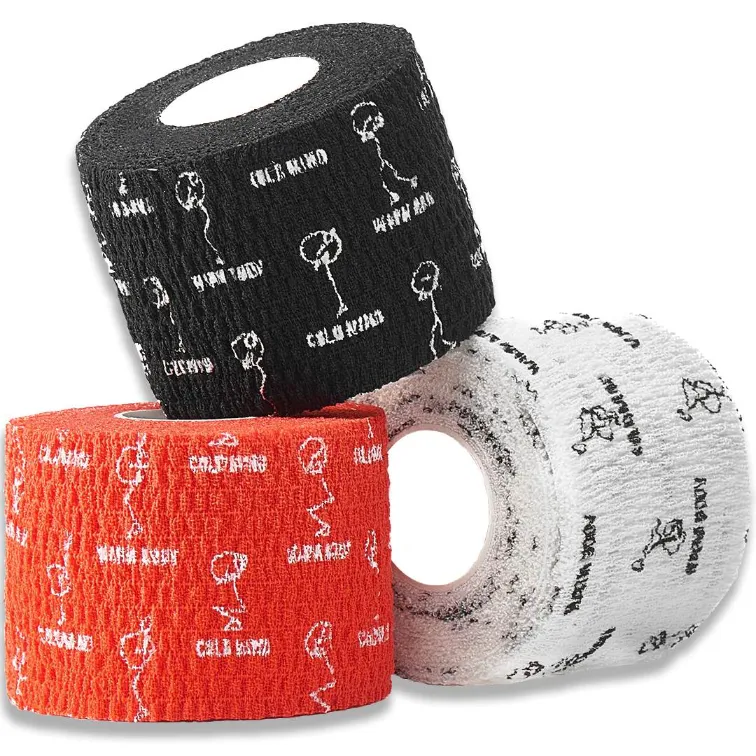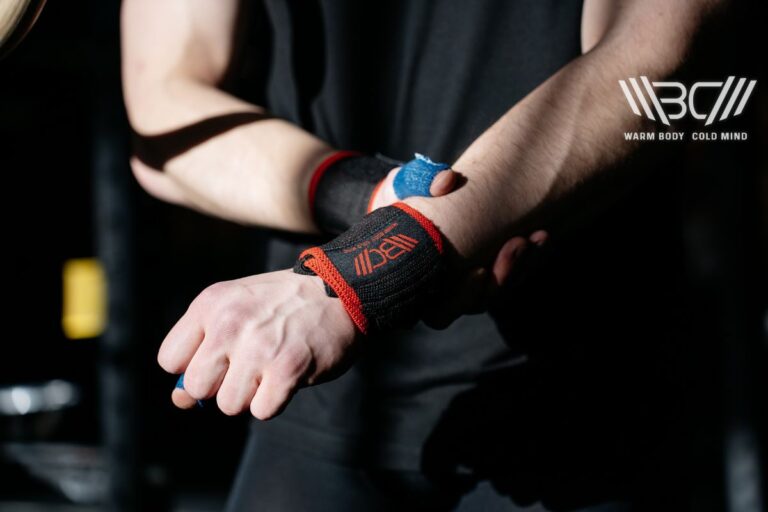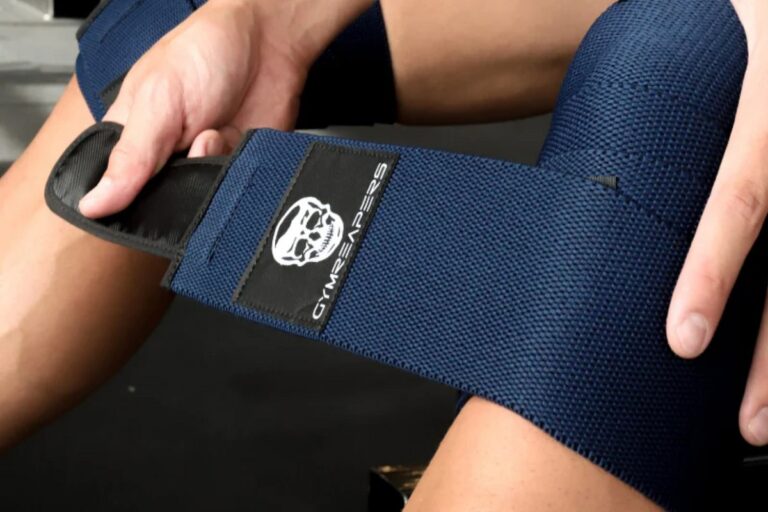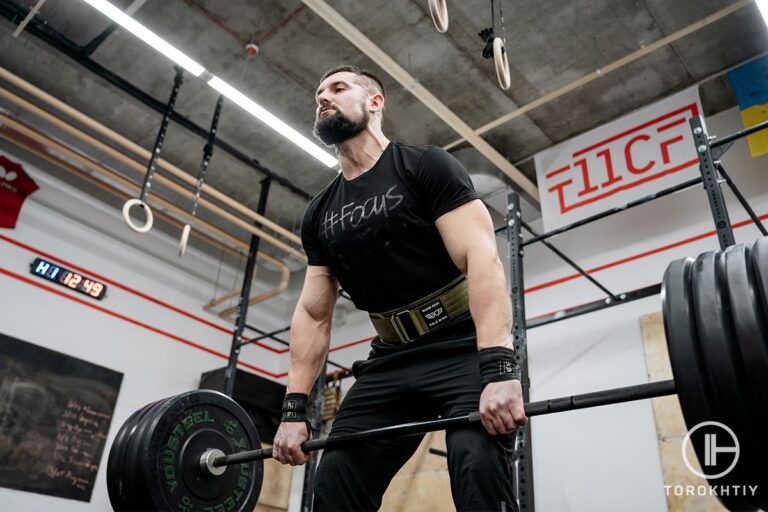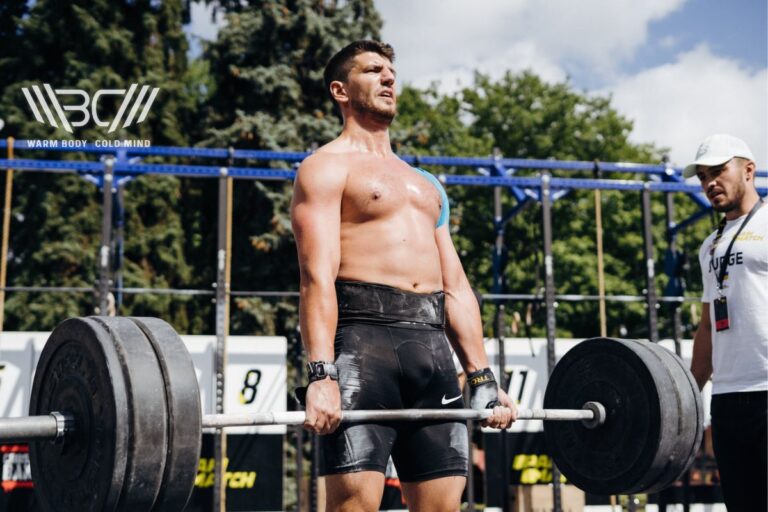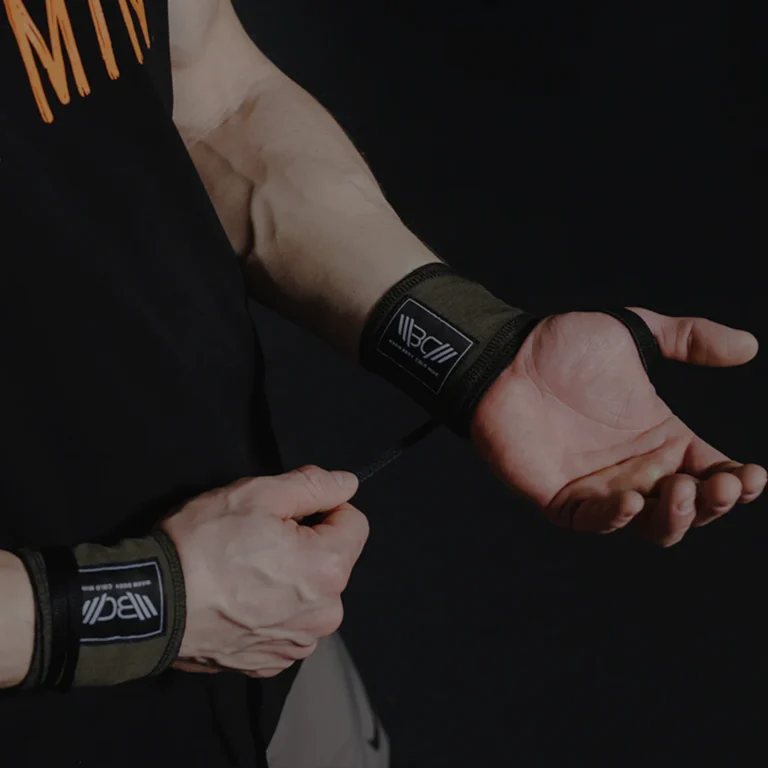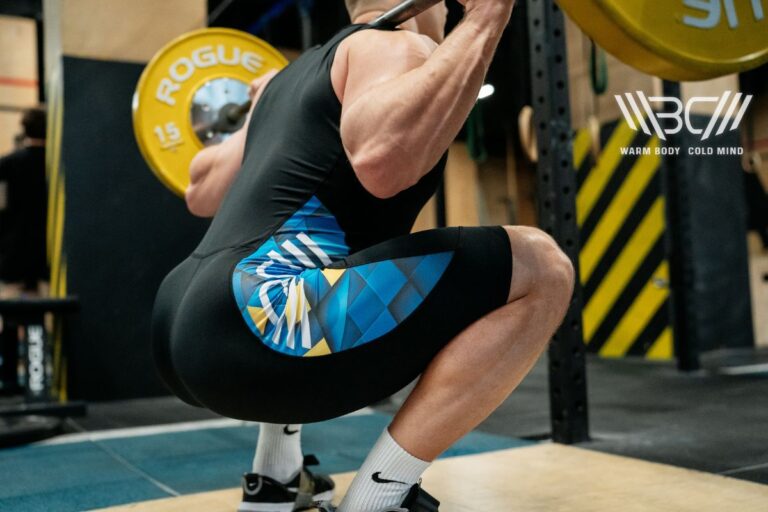Deadlift Grip: Which One to Use? (9 Options Explained)
Choosing a deadlift grip is a big decision, as there are 5 different types with various required techniques, pros, and cons. Finding the best grip for deadlift comes down to personal preference, experience, and ability.
More complex grips such as snatch grip deadlift tend to be tackled by athletes, and simpler grips such as overhand deadlift grip are well-suited to beginners.
Which deadlift grip should you use?
The 5 common deadlift grip variations are overhand, mixed, hook, snatch, and axle. Each of these different grips for deadlift has various pros and cons, alongside different techniques when being performed. Less experienced lifters should use simpler grips until form has been perfected, while athletes can use all deadlift grips.
Why Is Proper Deadlift Grip Important?
The ability to hold onto the barbell securely during a deadlift is key for completing the exercise safely. A weak grip can lead to an unstable bar and potential injury from straining to keep the bar in your hands.
Having a solid deadlift hand position means you can focus on executing the lift with the best form possible, knowing your grip can withstand the bar.

1. Bar Security
Arguably the biggest benefit of proper deadlift grip is the security of the barbell. The last thing you want to happen when you’re ready to start a new set is for the bar to become unstable during the lift.
Although deadlifts are complex, they still need to be controlled, and having a solid hold of the bar can help you execute a controlled, well-formed deadlift. Although grip strength can be a battle, especially if you’re at the beginning of your resistance training journey, it can be improved over time with consistent resistance training.
Once you’ve got your deadlift form in check and your weight increases from week to week, it can be helpful to introduce straps such as our WBCM weightlifting straps Lasso Pro for additional wrist support.

Cotton Lasso Lifting Straps Pro
Enhance your lifting experience with Warm Body Cold Mind lasso lifting straps designed for durability and comfort.
2. Activating Key Muscles
When you grip the barbell, regardless of which deadlift hand grip you choose, key muscles such as those in the upper back become engaged. As you bend your knees, lower your hips, and grip the bar tightly with the hands below the shoulders in preparation to lift the bar, your back should straighten and your lats should engage.
The hands and forearms also move into the spotlight, activating so you can continue to lift with the peace of mind a correct and strong deadlift grip brings.
3. Improved Grip Strength
One of the best ways of improving your grip strength in the gym is to be consistent with practicing it. Once proper grip has been achieved and deadlifts become part of your program, you will begin to see progression with the weight you are shifting.
Increasing the weight on the bar can test your grip strength, as it can become more difficult to hold the bar as it becomes increasingly heavier. By continuously working on your grip strength as part of your training, you can keep seeing results and maintain a quality grip across various exercises.
Sweaty hands and calluses can make achieving a secure grip more difficult, but our WBCM liquid chalk is a game-changer for long-lasting dry hands in a mess-free application. This quick-drying chalk creates a dry layer which results in better grip thanks to less sweat on both hands and the bar.

Maximize your grip with premium quick-drying Warm Body Cold Mind liquid chalk leaving no mess.
3 Main Deadlift Grip Variations + 6 Auxiliary Types
There are 5 different grips for deadlift and it’s worth exploring each of them in more depth as there are a range of potential benefits and drawbacks that need to be considered. Introducing new grips into your sessions can help you gain skill, knowledge, and can also better your lifts if you’re struggling with the current grip you’re using.
1. Overhand Grip Deadlift
Overhand deadlift grip is commonly used by everyone from beginners to pros, and it’s also the simplest to execute. Although this grip type is accessible, it isn’t necessarily the strongest when there’s a large amount of weight on the bar.
The double overhand grip deadlift can be a huge test of grip strength as the hands can become weak under tension and release the bar. It’s an ideal grip for lifting lighter weights, familiarizing beginners with deadlift form, and building grip strength in the long run for general strength training and bodybuilding.
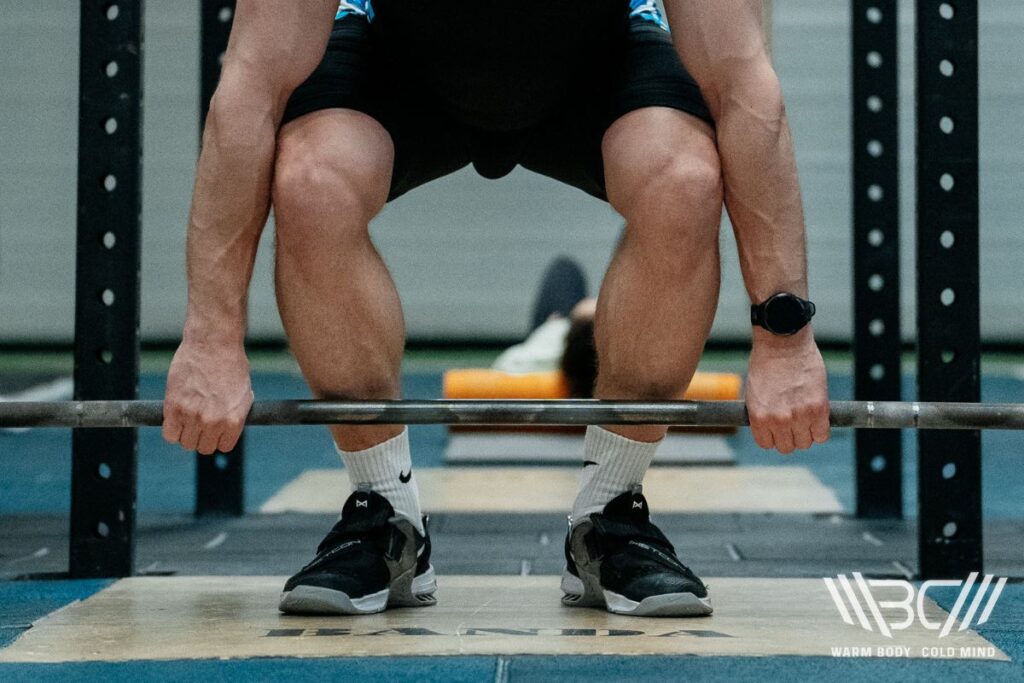
How To: The overhand grip can be used by placing your hands on the bar with your arms just outside both of your knees. You can then begin wrapping your fingers over the bar so your palms are angled towards the floor.
Once you’ve secured your hands and are feeling confident in your grip on the bar, bring your thumbs to your hands to provide further support.
Pros
- Uses the body symmetrically, limiting the chance of muscle imbalances
- Ideal for beginners as it is a simpler deadlift grip type
- Can be beneficial for improving grip strength over time
Cons
- Difficult to use when lifting a particularly heavy bar
- Somewhat limited by grip strength
- Lacks bar security when compared to other grips
2. Mixed Grip Deadlift
Mixed grip deadlift is similar to overhand, the main difference being that one hand is wrapped over the bar and the other hand is wrapped under the bar. A mixed grip is safer than overhand as there’s less risk of grip failure and the bar rolling out from your hands.
Initially, this grip can feel uncomfortable, but it’s worth trying out if you’re struggling with an overhand grip and want to experiment with something new.
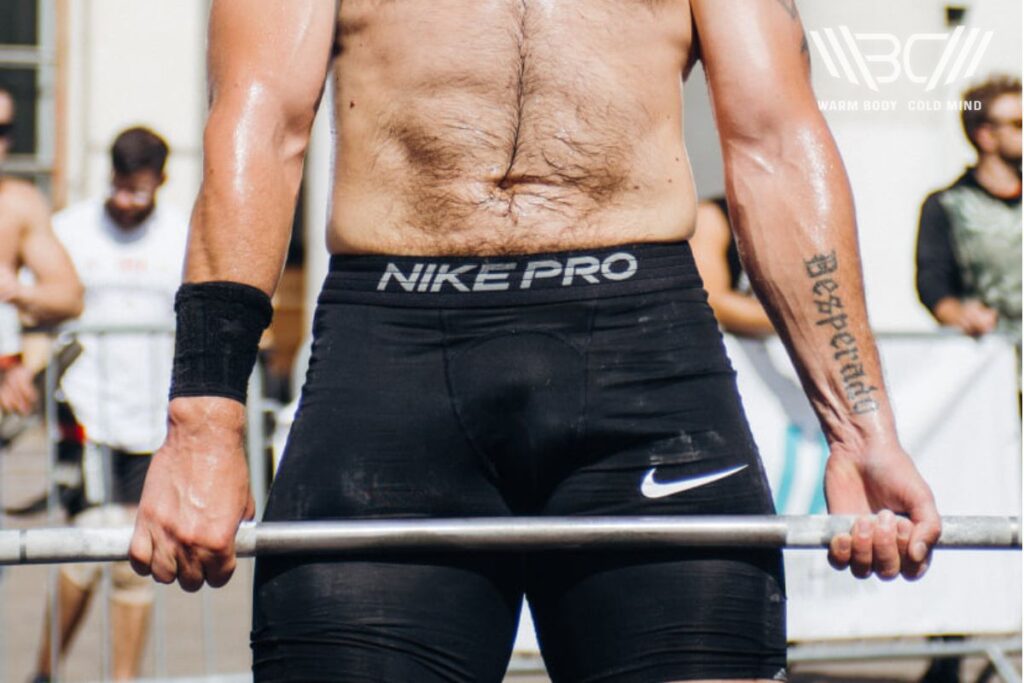
Mixed grip can be easy to transition to from an overhand grip, but it’s essential to swap and change around which hand is pronated and which is supinated to help avoid any muscle imbalances or asymmetries.
How To: Place your hands on the bar in the same way you would a conventional deadlift with an overhand grip, with your hands just outside of your knees. Use your dominant hand in an overhand position, with your other hand wrapped around the bar from underneath.
You should end up with one hand in an overhand position and the other in an underhand position with the palm facing the ceiling.
Pros
- Natural progression from an overhand grip
- Increased bar security as the bar cannot roll away
- Can improve grip strength but hands should be switched
Cons
- Can lead to muscular imbalances
- Underhand grip can put strain on the forearm and bicep
3. Hook Grip Deadlift
Hook grip deadlift is a more advanced version of a double overhand grip, and it’s commonly used by advanced athletes for powerlifting and Olympic weightlifting as it is ideal for heavier lifts. Knowing how to hook grip deadlift means you can bring this grip variation into your sessions and trust it to get you through big lifts safely and securely.
There is less chance of grip failure as a hook grip recruits the thumb underneath the fingers to essentially create a ‘hook’ to hold the bar.
How To: Approach the bar and once you’ve chosen your deadlift grip position, place your thumb on the bar and then wrap your fingers over the top to secure the bar in place. This can feel uncomfortable at first until you become familiar, so try to avoid pressing down on your thumbnail, and trust the progression of this grip type.
Pros
- Improved bar security as the thumb acts like a hook on the bar
- Strong grip variation for heavy lifts
- Ideal grip for strength athletes
Cons
- Can be uncomfortable and painful for the thumb
- Relies more on the thumb for security than improved grip strength
4. Snatch Grip (Auxiliary)
A less common but still effective grip is a snatch grip deadlift, which tends to be favored by athletes or those with extensive experience as it’s difficult to get right. A snatch grip requires the hands to be in a wider starting position which can help engage the muscles in the back.
This grip is similar to an overhand grip, the central differences being the wider hand placement and the fact this grip is used for the snatch exercise and isn’t a type of deadlift.

How To: A snatch grip deadlift is far wider than the other grip types mentioned. To find the ideal width for your hands, stand in an upright deadlift position and increase the space between your hands until the bar settles in the creases of the hips. The barbell should settle into the hips when you hinge or bend at the hips.
Pros
- Can be used across various grip types
- Targets the upper body and helps engage the upper back
- Can develop grip strength when used consistently
Cons
- Widened hand position makes it difficult to perform
- Not suitable for novice lifters due to complexity
- Can be an uncomfortable position to adopt
5. Axle Grip Deadlift (Auxiliary)
An axle grip deadlift refers to a deadlift being performed with an axle barbell which is thicker than the standard barbells you tend to see in gyms. The main reason for training deadlifts with an axle bar is to improve your hand and forearm strength, along with grip strength.
A thicker bar is more difficult to hold onto, and this is a blessing and a curse. It can make things far more uncomfortable as the wider bar requires more effort from the hands to keep it secure, but this difficulty can drastically improve grip strength and this is why it is used with athletes.
How To: The only requirement for an axle grip deadlift is using an axle barbell. Various deadlift grips can be used with the bar, and the arms can be placed below the shoulders, with hands outside of the knees, but an overhand grip tends to be the most common.
Pros
- Can lead to improved muscle activity as the bar is more difficult to hold onto
- Builds grip strength as it’s hard for the hands to pinch the bar
- Great challenge for those who are comfortable with all deadlift grip types
Cons
- May be difficult to source an axle barbell
- Not suitable for beginners as a lot of stress and strain is put on the hands to hold the bar
- Those with smaller hands will likely find it difficult to hold onto an axle bar

Pro Tip:
Axle bars can be hard to come by, but if you want to practice deadlifts using an axle bar, it’s possible to add a grip attachment to the bar instead which should do the job. Axle bars tend to be favored by athletes, so it’s not uncommon for them to not be found in mainstream gyms.
6. Thumbless Grip (Auxiliary)
A thumbless grip is exactly what is suggested by its name; gripping the barbell without using your thumb. This might sound strange, but the thumbless grip, or suicide grip as it’s often called, has a variety of drawbacks and advantages that are worth looking into.
Mainly used by bodybuilders and powerlifters, it’s essential to get a thumbless grip right to maintain control of the bar and safety during the lift.
How To: Place your arms slightly outside of your knees with your hands over the bar. Don’t wrap your thumb underneath the bar, instead, let your thumb follow your fingers over the bar. Engage your fingers so they squeeze the bar into your hands and maintain the grip throughout the deadlift.
Pros
- The suicide grip may feel more natural and comfortable for some lifters
Cons
- Difficult but can be made easier by using straps
- Potentially dangerous as there’s less control of the bar without using the thumb
7. Using Straps (Auxiliary)
Building on your grip strength comes with practice, but for added support during big lifts, it’s wise to protect your wrists by using straps. Although straps aren’t a necessity for training deadlifts, they can provide the wrists with some added support, especially if you struggle with your grip and letting the bar go when you’re deadlifting on a heavy day.
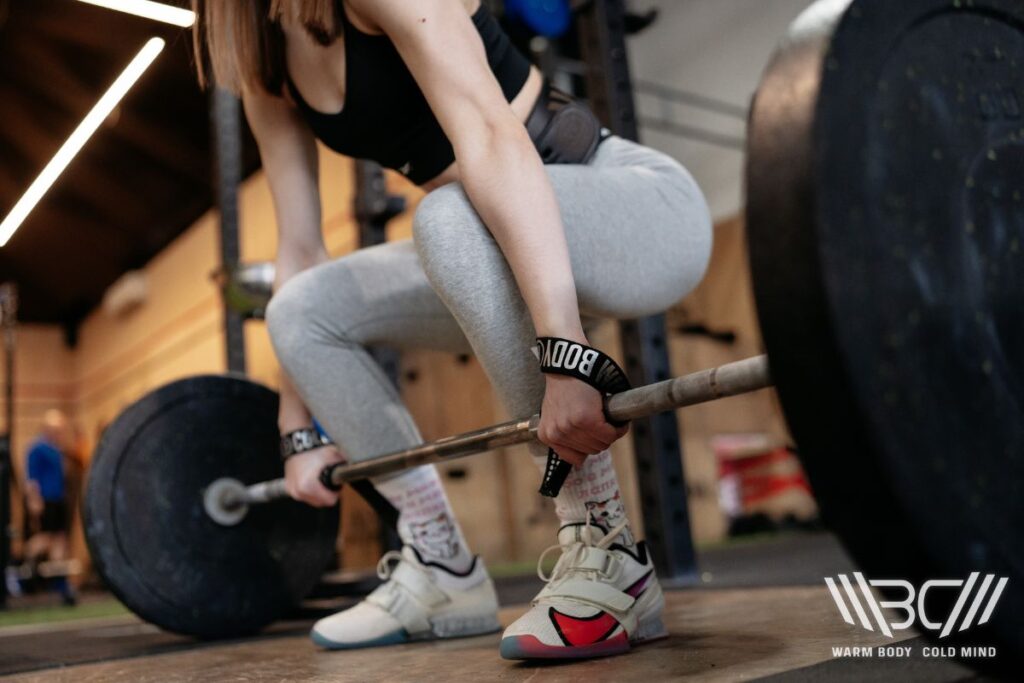
How To: Straps for deadlifts can be used by placing one end of the strap through the other end, creating a loop where you can then place your hand. Once your hand is in the loop, it can then be adjusted to ensure it’s secure. Wrap the loose end of the strap around the bar a couple of times and you’re good to go.
Pros
- Additional wrist support and therefore lower risk of injury
- Can be beneficial to achieve heavy lifts where grip strength can become a struggle
- Less messy than using chalk and can be used in various exercises
Cons
- Over-reliance can lead to worse grip strength as your body becomes accustomed to lifting using the straps
- May not be approved for use in all competitions
8. Using Lifting Hooks (Auxiliary)
Along with weightlifting straps, lifting hooks can also be a great way to aid your deadlift training. Lifting hooks work by a strap that’s wrapped around the wrist, attached to a hook that sits in your palm, and hooks onto the barbell.
Lifting hooks can simply be a velcro strap and hook, or they can be attached to gloves that you wear instead. Using hooks for deadlifts can help reduce the pressure on the hands and wrists, making deadlifting more comfortable.
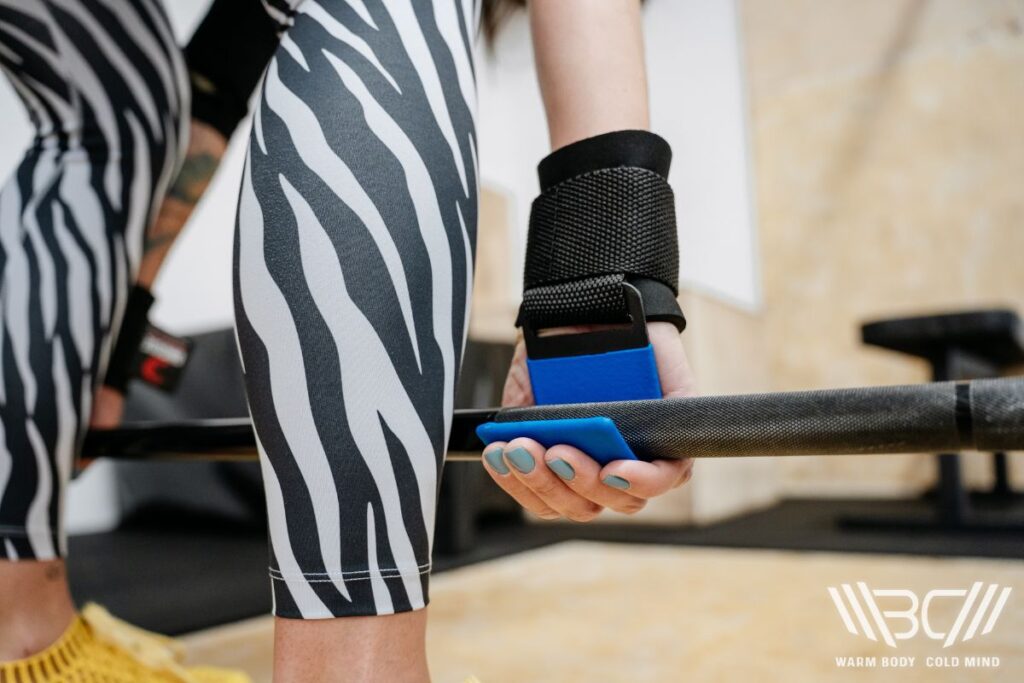
How To: Using lifting hooks for deadlifts can be done by securing your wrist in the velcro strap, holding the hook in your hand facing out towards you, and proceeding with your deadlift starting position using the hook on the bar.
Pros
- Alleviates stress on the hands and wrists
- Able to achieve a secure grip using lifting hooks
Cons
- Can be a costly investment as lifting hooks are expensive
- Lifting hooks have a weight limit so may not be suitable for those able to achieve particularly heavy deadlifts
9. Parallel Grip with Trap Bar (Auxiliary)
The trap bar can be used effectively with trap bar deadlifts, allowing lifters to take more of an upright stance and grip the bar at either side of the body as opposed to down on the floor in front of the feet. The grip typically used with a trap bar deadlift is a neutral grip which can be comfortable for lifters to adopt.
How To: Stand in the center of the trap bar, extending both arms outwards and gripping the bar with a neutral grip where the palms are, in effect, facing one another.
Pros
- Neither hand is pronated or supinated so there is equal use through both arms
- Position can help reduce the stress on the back as it’s easier to maintain a straight torso
- Neutral grip means it’s easier to maintain solid form throughout the exercise with a secure grip on the bar
Cons
- Trap bar deadlifts target the quads more which isn’t ideal for lifters desiring more glute and hamstring activation
- Not all gyms have trap bars available, limiting their use to select locations only
How To Choose Right Deadlift Grip?
Choosing the right deadlift grip boils down to personal preference, ability, experience, and goals.
1. For Beginners
Beginners or novice lifters should stick to perfecting form with a simpler grip such as overhand before trying out a more advanced grip such as a snatch or axle deadlift grip. This will allow for the focus to be placed on improved form rather than grip strength.
Transitioning from a double overhand grip deadlift to a mixed or hook grip deadlift is a natural progression, but it’s vital to carry proper form into the various types of deadlift grips.
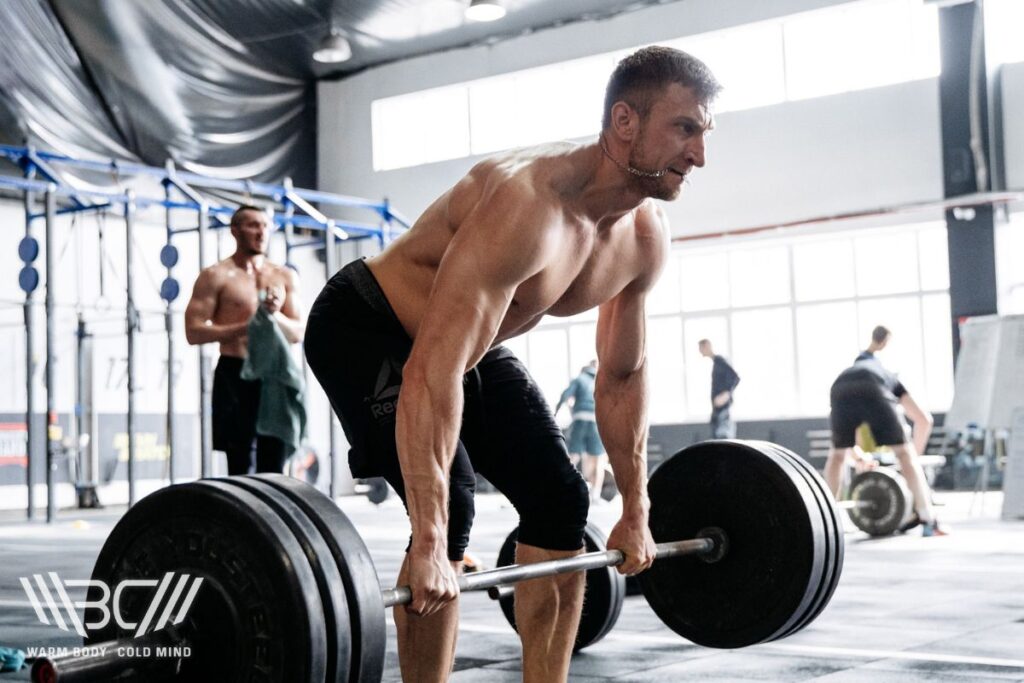
2. For Advanced
More advanced grips such as hook or snatch may allow you to lift more weight, where you were otherwise held back by grip strength.
Increased upper body activation with snatch or axle grips can be beneficial for improving muscle activation, but these grips are tricky to execute and can take time and practice to get right so they are more favored by seasoned athletes.

Maximize your lifts with Warm Body Cold Mind lifting tape, designed for the perfect hook grip.
Struggling with grip strength is a battle many gym goers inevitably face, but our WBCM weightlifting thumb tape can make a significant improvement. By helping to create a better grip, this thumb tape can improve bar security whilst also being beneficial for the overall comfort of your hands and thumbs.
Try all of the main grip types and choose the one that fits best for you, remembering to use all grips from time to time to diversify your training.
Which Deadlift Grip to Choose For Which Sport?
The three main deadlift grips; overhand, mixed, and hook all have an ideal time and place to be used. It’s natural to begin deadlifting with an overhand grip before progressing to a mixed and finally a hook grip as your form and strength improve.
Each grip type can be used when deadlifting, but it’s common to see lifters gravitate towards using certain grips for certain sports.
Powerlifting: mixed or hook grip
Olympic Weightlifting: hook grip
General Strength Training: double overhand
Bodybuilding: double overhand
Some lifters choose to aid their deadlifting sessions using straps or wraps which help provide additional support to the wrist and hands. When using additional equipment, avoid becoming reliant by training both with and without it, so you can continue to monitor your progression without any tools aiding you.
Deadlifting with Straps
Utilizing additional equipment in gym sessions isn’t something everybody is a fan of, but when used appropriately, equipment can help enhance your sessions. Using straps for deadlifting can be controversial, and if you’re training for a competition, it’s best to read through the guidelines of what equipment is permitted by the comp body.
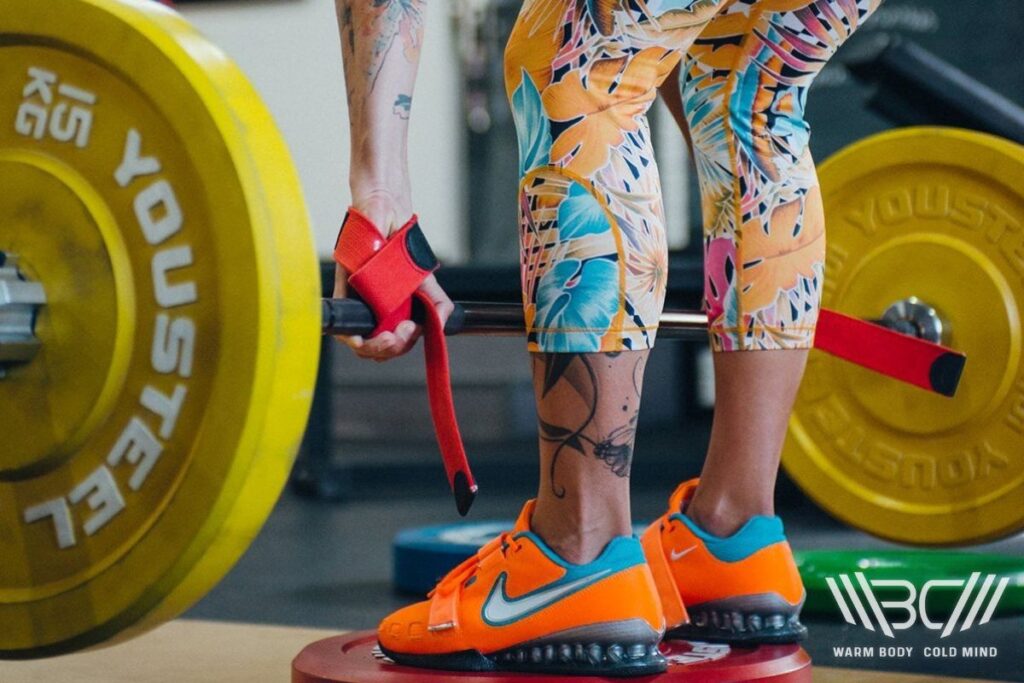
Deadlifting with straps takes away the concern of grip failure, as the straps create a bond between you and the bar, minimizing injury and increasing the security of the barbell during the lift.
If you’re racking plates on the bar, making good progress with deadlifts but are now struggling to keep hold of the bar due to the increased weight, then straps might be the answer for you.
Straps can help give you the boost you need from your sessions, so you can continue to make big gains and know your grip won’t let you down. Weightlifting straps can be used for all sets during your training, but deadlifting without straps can strengthen your grip over time, so it’s wise to use them for 80%+ of your 1RM.
How to Improve Grip Strength for Deadlift?
There’s no quick fix for improving your grip strength with deadlifts, with the phrase ‘practice makes perfect’ coming to mind straight away!
Grip strength is a journey, but if you’ve got a wealth of experience under your belt, your lifts are getting heavier, and your grip strength is becoming a burden, there are a few things you try to help improve your situation.
Practicing different deadlift grip variations can be beneficial, alongside including pull-ups, kettlebell exercises, static holds, and static hanging from a pull-up bar in your sessions. By completing a variety of exercises in your training plan, you can make improvements in different areas such as grip strength, muscle gain, and general fitness.

Using a variety of grips and techniques can help develop your grip strength, alongside not relying on your straps to help you through every single lift.
Instead, reach for your straps when your deadlift is particularly heavy, as added support will help guide you through the exercise effectively. Introduce auxiliary exercises into your training which can also help better grip strength. These include:
- Dead hang
- Plate Pinch
- Grip Squeezing
- Farmer’s walks
Practicing your grip strength will help you overcome common issues lifters face from calluses and sweaty hands to incorrect hand placement on the bar and opening the grip during the lift. Additional equipment such as chalk, straps, hooks, and tape can also be utilized to help improve grip strength for deadlifts.
Common Deadlift Grip Issues
Facing grip issues in the gym is a common problem and one that’s often seen when the weight on the bar increases and grip strength or discomfort becomes an issue. Although they can feel frustrating, common deadlift grip issues can be overcome with correct form, practice, and supplementary equipment.
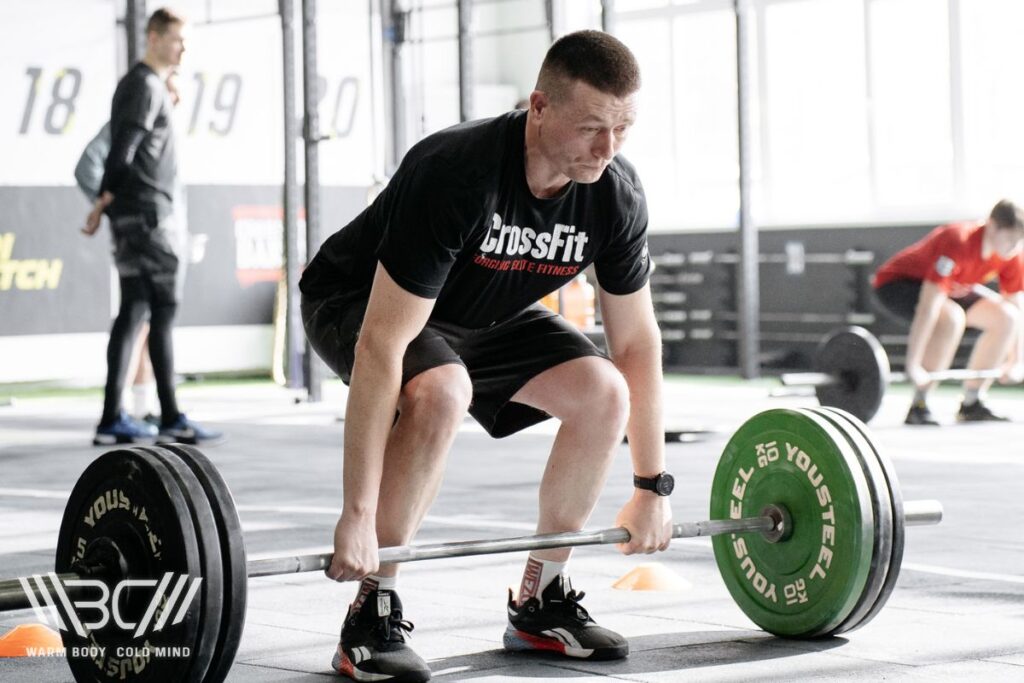
1. Calluses
Calluses might feel rough and sore on your hands, but they are the body’s way of protecting the areas of skin that are exposed to lots of pressure and friction. This is why they are commonly faced by lifters as the skin on our hands is consistently used to grip the bar tightly and securely with additional weight.
Wearing weightlifting gloves can help relieve pain if your calluses have burst or opened up, revealing tender pink skin beneath. To help limit the chance of painful calluses developing, introduce chalk into your sessions which will help create a layer over your skin.
2. Sweaty Hands
Sweating is part of exercise, and it certainly isn’t restricted to cardio! Feeling sweaty when weight training is a common issue, and when you want to maintain a firm hold of the bar in deadlifts, having sweaty hands can make the bar feel slippy and unsecure.
Liquid chalk is a fantastic tool to use to fight off sweaty hands, as applying a layer to the skin will absorb sweat and allow you to grip the bar with dry hands.
3. Wrong Bar Placement
When you’re holding a heavy bar, the only direction it will want to head in is down to the floor, as this is where it is being pulled by gravity. With an overhand grip, this means it’s easy for the bar to shift down toward your fingers, rather than remain in the middle point of your hands where you can grip the bar more firmly.
When you are ready to start your deadlift set, approach the bar with the arms just outside of the legs, with a grip distance of roughly shoulder-width apart, and aim to keep a solid grip and avoid letting the bar roll down to the fingers as this can weaken your grip.
4. Opening The Grip
As the hands grow weaker with each completed set of deadlifts, it’s not uncommon to see lifters failing their grip and dropping the barbell. This mainly happens when the bar is particularly heavy, but it can be avoided by ensuring you are capable and able to maintain a secure grip throughout the session.
If your grip is failing, it may be wise to lower the weight so you can maintain good form, or consider using straps for additional support or chalk for enhanced grip.
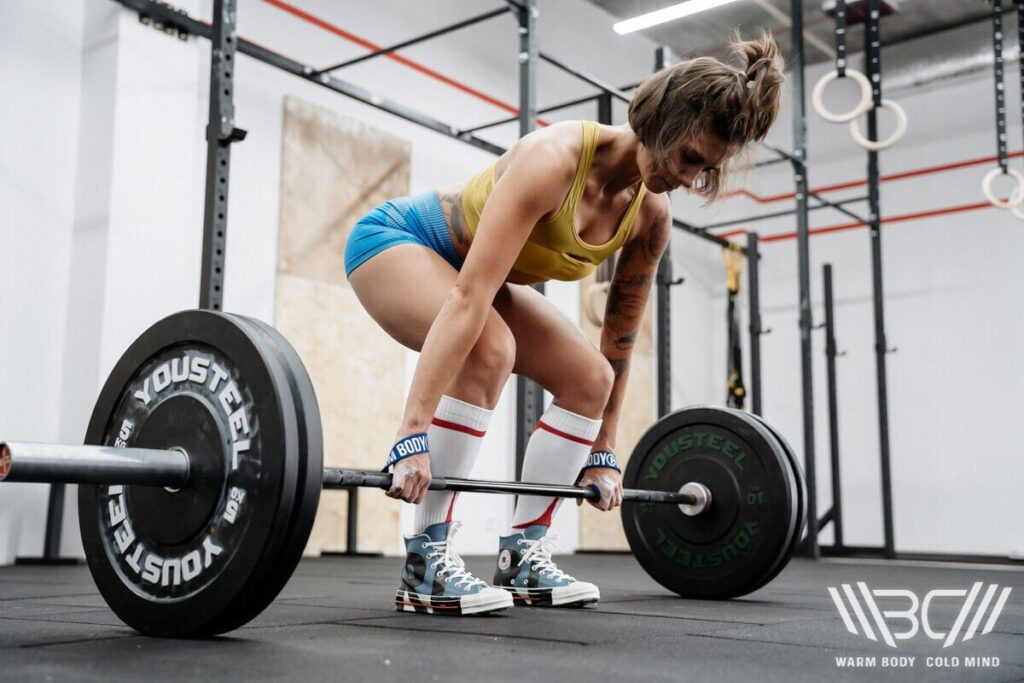
5. Discomfort
Some deadlift grips can feel uncomfortable, with hook grip being high up on the list. Especially when lifting a heavy load, deadlifts can be uncomfortable on the hands, causing calluses.
To help combat the discomfort often associated with various deadlift grips including hook grip, thumb tape can be beneficial, providing an additional layer of fabric so the pressure isn’t left solely down to the hands.
How To Choose the Correct Deadlift Grip Position
Finding the correct grip position is vital for good deadlift form, as you need to know both how and where to place your hands on the bar. Once you’ve racked weight on the bar and have chosen the grip you want to use, it’s time to figure out exactly where you should place your hands.
Various types of deadlifts such as the sumo deadlift will have a different hand placement to conventional deadlifts as hand width changes depending on how wide your stance is.
Conventional Deadlifts: Hands should be placed just outside of the knees, approximately shoulder width apart.
RDLs: Hands need to be positioned slightly wider than shoulder-width apart.
Sumo Deadlifts: Hands should be placed inside the knees, with roughly a foot in between each hand.
Trap Bar Deadlift: Use the handles for hand placement with a trap bar deadlift, with a neutral grip.
Subscribe!
Get useful tips, expert insights, and in-depth analysis of training programs & nutrition plans to get the most out of your performance.
Equipment To Help Improve Deadlift Grip
Some lifters frown upon using additional equipment in their weight training sessions, but tools such as wraps, straps, tape, and chalk can be beneficial, especially if you’re facing issues with your grip strength as you tackle heavier deadlifts.
Chalk: Chalk can be used in dry or liquid form, with the latter tending to be far more convenient and less messy. Chalk adds a protective layer over your hands so you can grip the bar effectively and help reduce the chance of calluses and blisters.
It’s also perfect if you struggle with sweaty hands as the chalk absorbs excess moisture, leaving you with a dry surface.
Straps: Straps are often the answer when you’ve surpassed the weight that your grip strength can handle, and you’re faced with a grip that can’t support you through your heaviest days. Straps alleviate the pressure on your grip, providing support to the wrists so you can continue lifting heavy for a longer period.
Hooks: Lifting hooks allow the arms to become more engaged in movements, so the brunt of the lift isn’t solely left to your wrists, hands, or grip strength. The hook attaches to the bar, supporting the weight as you engage arm muscles and proceed with the deadlift.
Lifting hooks are ideal for added security when lifting the bar, and can also help if you’re facing problems with a weakened grip with heavier loads.
Tape: Lifting tape is a highly effective piece of equipment for lifters to utilize, adding a layer of comfort over the hands or thumb. Tape protects against pinching of the skin and blister development by adding a layer between your skin and the bar.
Weightlifting tape also helps maintain a dry area, so you won’t be burdened by sweat which can make it trickier to keep a firm hold of the bar.
Conclusion
The different grips for deadlift are worth exploring for those looking to keep their training fresh and to challenge the body in a myriad of ways. Some variations are easier to perform than others, but the more difficult grips can be beneficial for lifting heavy weight and keeping a secure grip on the bar while doing so.
What’s your favorite deadlift grip and why? Let us know your thoughts!
References:
- Elin Magnusson Thomas, Margareta E Salhberg, Ulla Svantesson, “The effect of resistance training on handgrip strength in young adults”, Isokinetics and Exercise Science, https://www.researchgate.net/publication/286969359_The_effect_of_resistance_training_on_handgrip_strength_in_young_adults (Accessed March 17 2024).
- Isabel Martín-Fuentes, José M. Oliva-Lozano, José M. Muyor, “Electromyographic activity in deadlift exercise and its variants. A systematic review”, National Center For Biotechnology Information, https://www.ncbi.nlm.nih.gov/pmc/articles/PMC7046193/ (Accessed March 17 2024).
- Jace Derwin, CSCS, “Effective Methods of Grip Strength Development”, National Strength and Conditioning Association, https://www.nsca.com/contentassets/e4159c35c1354d0db3dfb58fb9790d84/caoch2.3-effective_methods_of_grip_strength_development.pdf (Accessed March 17 2024).
- Shirley S. M. Fong, PT, PhD, Louisa M. Y. Chung, RNutr, DHSc, Yang Gao, MD, PhD, Jeff Chak Wai Lee, BHE, Tak Ching Chang, BHE, and Ada W.W. Ma, PhD, “The influence of weightlifting belts and wrist straps on deadlift kinematics, time to complete a deadlift and rating of perceived exertion in male recreational weightlifters”, National Center For Biotechnology Information https://www.ncbi.nlm.nih.gov/pmc/articles/PMC9282110/ (Accessed March 17 2024).
- Technical Rules book of the International Powerlifting Federation 2024, International Powerlifting Federation https://www.powerlifting.sport/fileadmin/ipf/data/rules/technical-rules/english/IPF_Technical_Rules_Book_2024_24_Jan.pdf (Accessed March 17 2024).
- All photos are made by WBCM Media team.
Author: Sergii Putsov
PhD in Sport Science, Olympic weightlifting, Strength & Conditioning coach and fitness expert
Sergii Putsov is a professional weightlifter with over 20 years of experience and multiple national medals. He was a member of the National weightlifting team, competing in the 94 kg weight class. Sergii holds a master’s degree in Olympic & Professional Sport Training and a Ph.D. in Sport Science. After his athletic career, Sergii transitioned into coaching and is now responsible for designing training programs, writing blog articles, providing live commentary for international weightlifting competitions, and hosting sport and fitness seminars worldwide.

